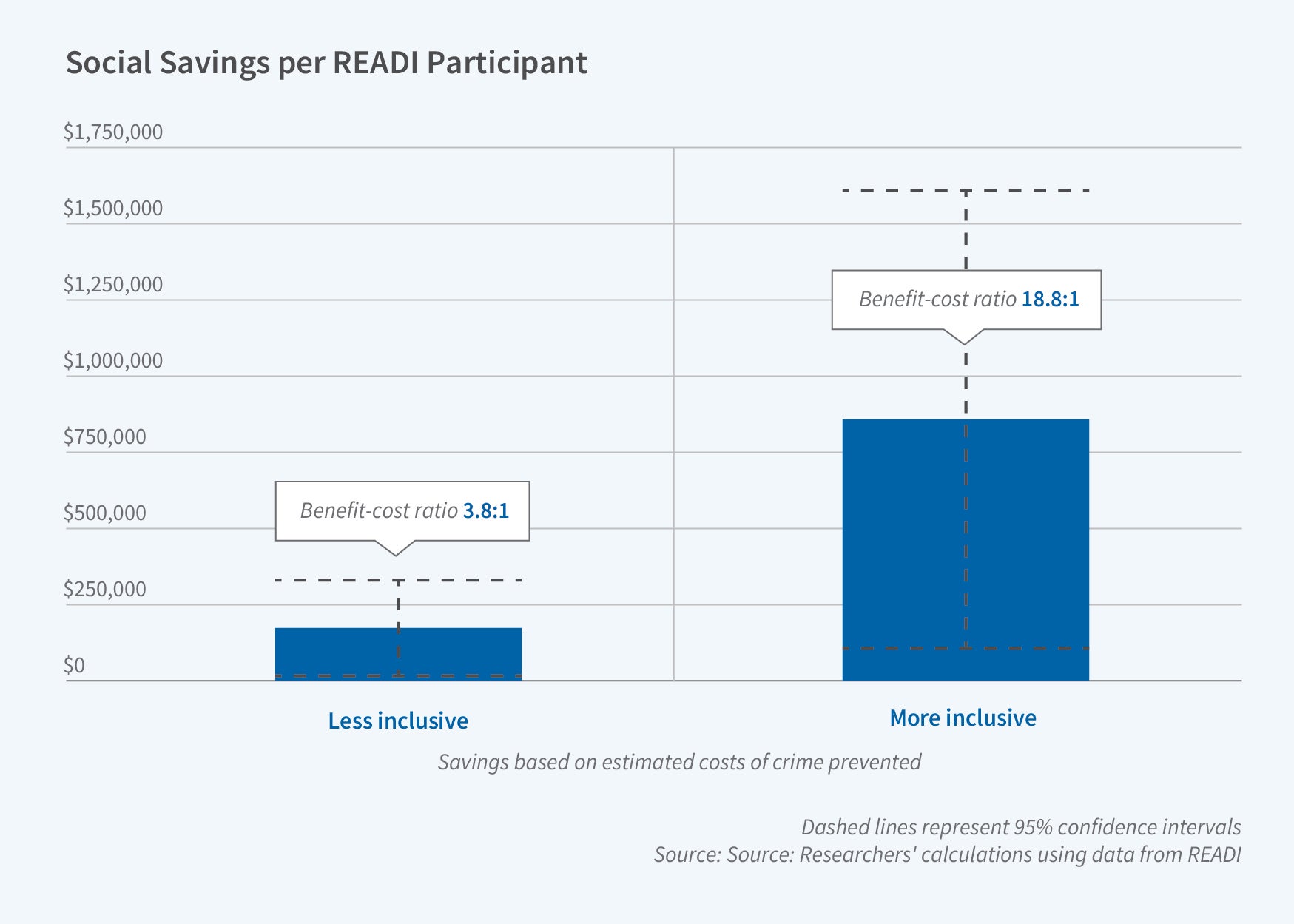Combating Gun Violence with Job Opportunities and Therapy

When job opportunities and support programs were provided to Chicago men predicted to be at high risk of involvement in gun violence, shootings declined.
Gun violence is endemic in the United States: over 170 Americans are shot each day, and the leading cause of death for young Black men is gun-involved homicide. In Predicting and Preventing Gun Violence: An Experimental Evaluation of READI Chicago (NBER Working Paper 30852), Monica P. Bhatt, Sara B. Heller, Max Kapustin, Marianne Bertrand, and Christopher Blattman find that a Chicago program was cost effective in reducing gun violence.
READI is a collaboration of the nonprofit Heartland Alliance, community-based partner organizations specialized in street outreach and employment, the researchers, and the University of Chicago Crime Lab. It delivers therapy based on cognitive behavioral therapy (CBT) principles, employment, and select wraparound services to a group of men at the highest risk for gun violence involvement from Austin/West Garfield Park, North Lawndale, and Englewood/West Englewood — neighborhoods with some of the highest levels of gun violence in Chicago.
READI’s components were designed to address multiple causes of gun violence. During the study, it provided subsidized work for 29.5 hours per week for up to 18 months. Work provides an alternative to illegal markets; the associated income is an incentive to participate. The additional CBT component reduces hot decision-making and helps participants embrace new social identities and norms. Additionally, outreach and program staff provide tailored support to individual challenges such as homelessness, family quarrels, and legal trouble.
Men were referred to READI through three pathways. An algorithm using administrative police data referred those at highest predicted risk of involvement in gun violence. Outreach workers with extensive experience in READI neighborhoods also made referrals, and the program targeted men leaving jail or on parole. The 2,456 referrals were randomized into the READI program or the control group between August 2017 and March 2020, then followed for 20 months.
The referral mechanisms successfully anticipated individuals’ future risk of gun violence. In the control group, there were 11 shooting and homicide victimizations for every 100 people, a rate 2.8 times higher than among similar-aged men in READI neighborhoods. Compared to algorithmic referrals, outreach referrals had lower predicted gun violence risk but similar realized risk, suggesting that outreach workers utilized information unavailable in the administrative data.
Of those assigned to the READI treatment group, 55 percent started the program — 78 percent among outreach referrals and 37 percent among algorithm referrals. A few weeks after orientation, about 85 percent of participants were still working. Over time, retention stabilized: 75 percent continued to work after 20 weeks, and roughly half were still working after a year.
The researchers standardize and average police data on shooting and homicide victimizations, shooting and homicide arrests, and other serious violent-crime arrests to form an index. Being assigned to READI had no detectable impact on this serious violence index, as not all index components moved in the same direction. Among participants, there was an 18 percent decline in victimizations and a 64 percent decline in arrests for shootings and homicides, but a 13 percent increase in arrests for other serious violent crimes.
Among outreach referrals, however, there was a 0.13 standard deviation decline in serious violence among participants, driven by a 45 percent decline in shooting and homicide victimizations, a 79 percent decline in shooting and homicide arrests, and a small decline in other violent-crime arrests. These results remain statistically significant even after multiple testing adjustments. The larger declines were not explained by predicted differences in risk; instead, qualitative evidence suggests that outreach workers targeted men whom they believed would be more responsive to READI. Outreach referrals’ greater response may also have been due to better relationships with outreach workers and greater program retention. Results were driven by the subset of outreach referrals whom the algorithm also identified as being at highest risk, which suggests that combining algorithmic and human screening outperformed either alone.
Drawing on previous estimates of the cost of crime, the researchers estimate that the social benefits of reduced criminal activity were between 3.8 and 18.8 times the cost of the READI program over the 20-month study period.
— Whitney Zhang


